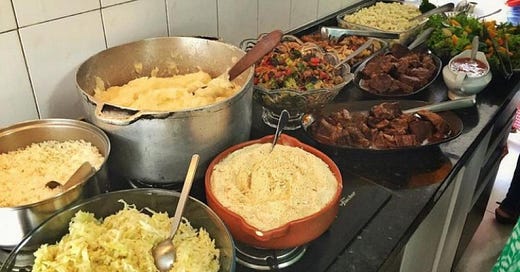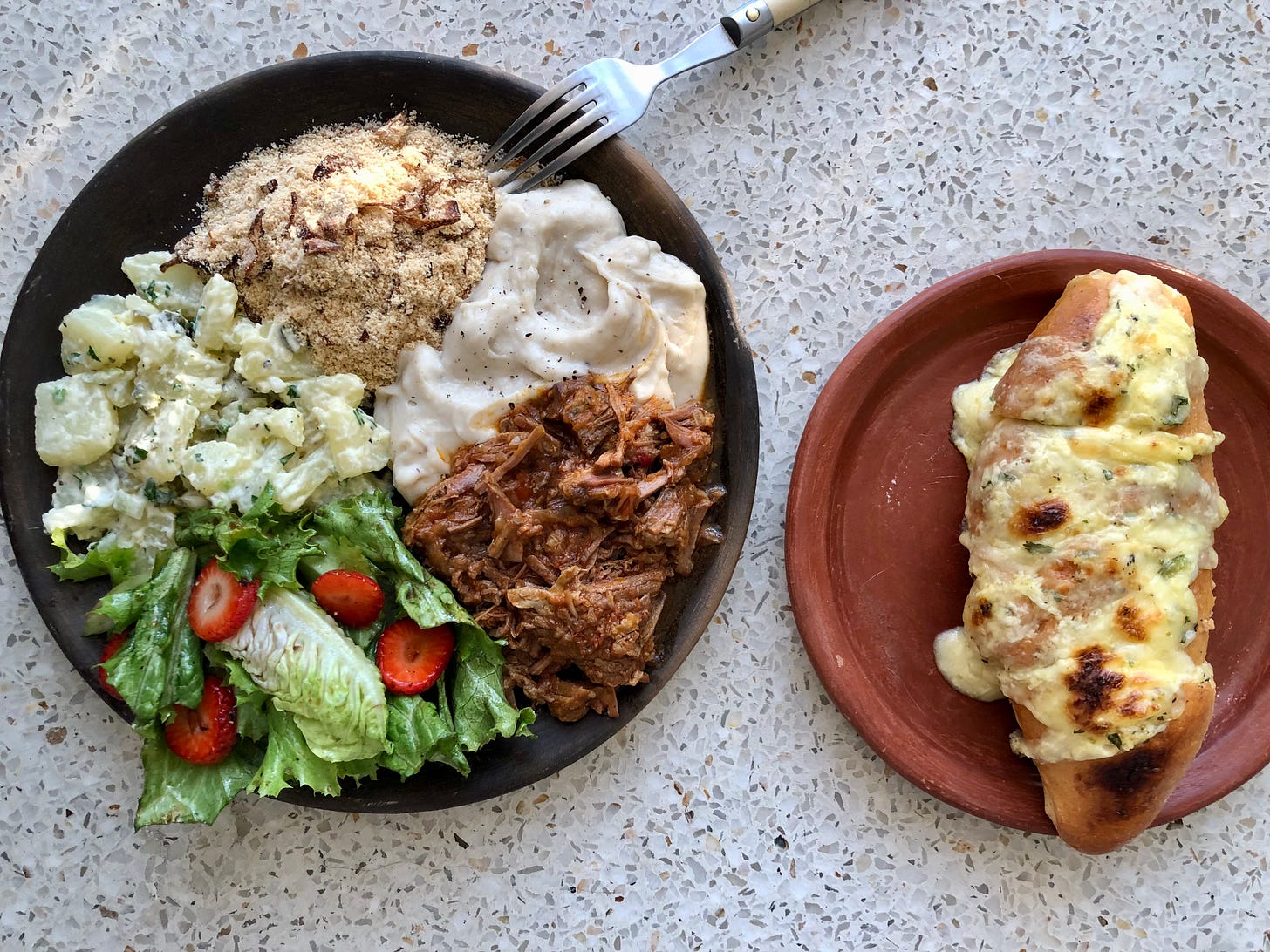I have a little obsession with family dishes. And I don't mean “familiar” in terms of size, but, rather, those typical platters filled with plenty of different stews and sides, that sometimes don’t even seem to make sense between each other, but as a whole they do; and that are served on weekends —or holidays— with no other aim than to gather, celebrate, and pamper those we love. Hence their perfection and deliciousness.
Exactly two years ago, I published something close to this concept in this newsletter, with the help of my friend Linita who shared with me —remotely— a couple of Colombian Christmas recipes (including one for buñuelos, which I am going to prepare very soon). A few months before that, she had already shared with me her family recipes for two typical dishes from her region, Valle del Cauca (she is originally from Cali): sancocho and empanadas. The recipes include her mom's advice on audio ❤️.
Here are the links to both entries…
Today, as I promised last week, I am reproducing a Brazilian dish with recipes from my friend and fellow journalist and Substack author,
—whom I interviewed in my previous post. She’s been living in the city of Curitiba, in the state of Paraná, for 11 years, but she is originally from Jaraguá do Sul, in the state of Santa Catarina, where her family still lives. When I asked her to describe a favorite, symbolic dish, Flavia told me that one of the foods she enjoys the most (even in her vegetarian stage, when she only left the meat out) is the combination of garnishes that are typically served around cupim assado —a slow-roasted beef (zebu) loin. In some homes, however, as in the case of Flavia’s, it is common for the cupim assado to be replaced by beef brisket, cooked in a pressure cooker, and previously sautéed, in what she refers to as "the Brazilian Holy Trinity.", a kind of sofrito made with garlic, onion, and tomato.At Flavia's house, this meat is accompanied by a wide variety of family dishes —as you can see in the image above, which portrays what she describes as a “common banquet” while her grandmother (to whom she dedicates the text How to Cook a Woman) was still alive—which includes maionese (potato salad), farofa (cassava flour with butter and toasted onion, pictured above), cassava puree, salad, and pão de alho (garlic bread).
Next week, in ATOLE CON EL DEDO, I am going to give you a list of links and tips on where to get farofa and other South American products for future recipes.
The recipes…
Keep reading with a 7-day free trial
Subscribe to Atole Newsletter to keep reading this post and get 7 days of free access to the full post archives.










